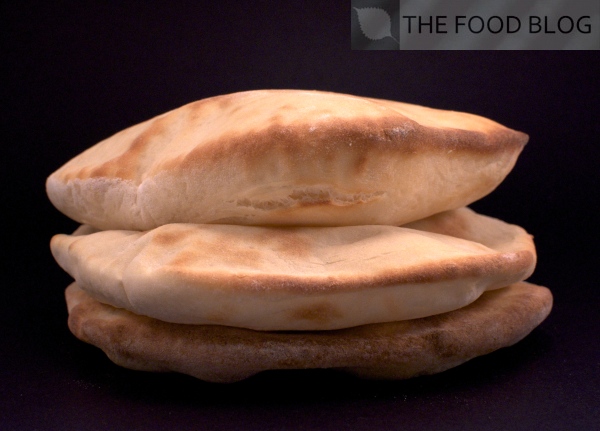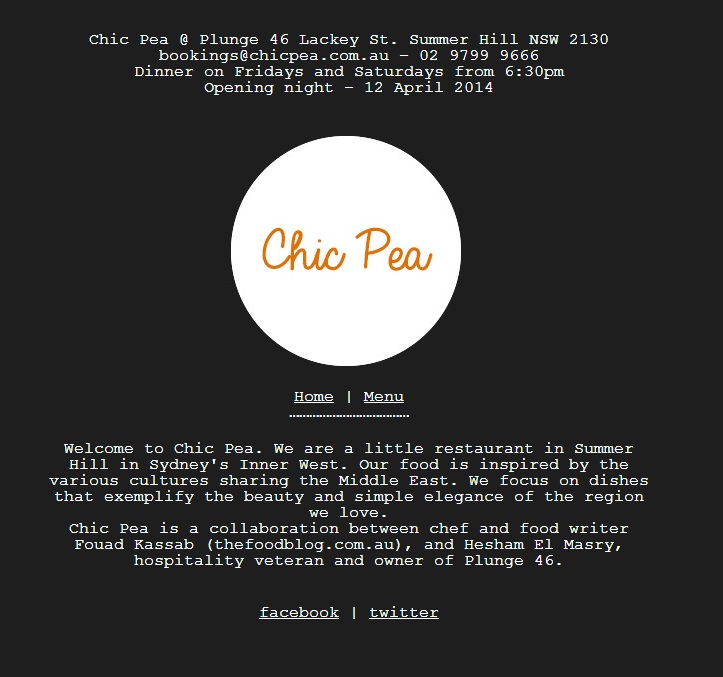
Hot bread. Rarely does a food so simple entice us so intensely. For thousands of years, the art and craft of Lebanese flat bread making was shrouded in mystery. But when scientists discovered the Middle-East late in the 18th century, they were dumbfounded to see the locals filling a flat round disc with spreads and meats and using it to hold and consume their food. After close inspection, it was found that the disc was indeed, bread. This bread, however, was quite different to European bread in that it would not fit into a toaster. In fact, if this bread were to be sliced, it would loose all food holding ability and become totally useless. So, for years, science lost all interest in flat bread, and its practice remained restricted to the ritualistic baking sessions of the local tribes. But slowly, as with all things good, the potential of flat bread became apparent, and the western world took to it like ducks to water. This was a natural progression, as there is only so much filling you can put between two slices of toast.
In Australia, flat bread is called Lebanese bread (which is how I will refer to it from here on). Of course, in Lebanon, we simply call it “bread”, much the same as how the Chinese refer to Chinese food as “food”. To disambiguate, we sometimes refer to Lebanese bread as kumaj bread. Kumaj apparently, is a Turkish word for bread that is cooked on charcoal. This sets it apart from out other two popular breads: marquq or saj bread (large, circular and paper thin bread cooked on a convex grill), or tannour bread (cooked in a tandour-like oven). My generation’s encounter with Lebanese bread came after the industrialisation of the bread making process and as such, we’ve never had anything but mass produced Lebanese bread. It is not clear to me which came first. Whether the machines we bought encouraged the creation of this type of bread or whether we lost the traditional bread making process to the machines. The latter seems more probable. In any case, replicating the Lebanese bread making process at home is quite simple and extremely satisfying, as the result is bread with more substance and integrity than that of store bought bread. Seeing the disc puffing up and separating is a visual treat and I urge you to experience it, if only for that.
Lebanese Bread Recipe
adapted from http://www.elook.org/recipes/entree/39624.html
Makes around 8 loaves/discs
Ingredients
- 1 packet dried baker’s yeast
- 1/3 cup water to mix with the yeast, warm but not hot
- 2 tablespoons sugar
- 3 cups plain, white flour
- 1 cup water, warm but not hot
- 1 teaspoon salt
Method
- Activate the yeast by mixing it with the 1/3rd cup of water and the 2 tablespoons of sugar
- Wait for 10 minutes until the mixture becomes frothy. If it doesn’t become frothy, your yeast has died/expired and you need to buy a fresh packet
- Meanwhile, sift the 3 cups of flour along with the teaspoon of salt into a bowl
- Create a well in the middle and add the cup of water and the yeast mixture
- Mix well and then knead with oomph for 10 minutes
- Make a ball and with a knife, slice a cross on the surface to loosen the surface tension
- Cover with a damp, clean cloth and place it in a warm, draft free area. Wait until it doubles in size (depending on the temperature this could be anywhere from 1 to 3 hours)
- Knock back the dough and divide into 8 balls
- Place on a lightly floured surface and flatten with a rolling pin until it is around 0.4 to 0.5 cm thick and put aside for 10 to 15 minutes to rise a bit more. The shape should be circular
- Heat the oven to maximum
- (Optional) Brush the top of the discs with a bit of milk if you want it to colour deeply.
- Bake each individual disc one at a time for 5 to 8 minutes until the top has nicely coloured (cooking time depends on the heat of the oven and thickness of the bread)
- Remove and eat immediately, or when cool store in a plastic bag in order for it to soften


11 comments
Even sexier than a Lebanese bloke wearing a skirt made entirely of cupcakes.
Mm I love Lebanese bread but now I’m sad because I just realised I’ve never made it myself before. I can just imagine how fun it is to see it puffing up. Nothing beats freshly made bread 🙂
Many interesting bits in your article Fouad; for instance I did not know that in Australia flatbread is called Lebanese bread; I also did not know you could make it at home without adding oil, I have always added oil, etc,etc; your posts are always so informative and I enjoy reading them very much.
.-= tasteofbeirut´s last blog ..Lebanese Gazpacho =-.
Fouad, I just ate and that pic made my mouth water still! You are the DEVIL I tell ya! My mom used to make bread during the war, I never watched though. My culinary interest had not arisen back in the time.
Really informative post Fouad. The knead with oomph is a great instruction, it describes what is required very well.
.-= Mark @ Cafe Campana´s last blog ..Footy Fare – Lamb and Harissa Sausage Rolls =-.
Mmm I love bread! However I refer to Chinese food as “Chinese food” 😛
PS beautiful prose, got me all warm and hungry inside
.-= FFichiban´s last blog ..TW: Night Market 2 (2009/2010) =-.
Great Recipe. You can add a bit of sugar to the dough for color, this way you won’t need to brush with milk.
The Ninja – hehe
Steph – It’s great fun just watching it, but it’s so good eating it too 🙂
Joumana – I actually never knew you had to add oil at all. Does it puff up with oil?
Viviane – glad you liked the photo 🙂 I’d be interested in knowing what your mom’s recipe was.
Mark – Thanks! Glad you enjoyed 🙂
Number 1 – hehehe. do you think Chinese people in China call it food or Chinese food?
Maro – I did add sugar habibi. there’s 2 tbsp of sugar in the recipe. The milk makes colours it beautifully though.
Your photo reminds me of puffed up bread just as it comes out of a bakery’s oven!
.-= Gourmantic´s last blog ..Piadina on the Island of Murano =-.
Fouad, my mom’s recipe is similar to yours minus the sugar. Basically water, flour, salt and yeast.
.-= Viviane´s last blog ..Dulcis in Furno’s Ricotta Rolls =-.